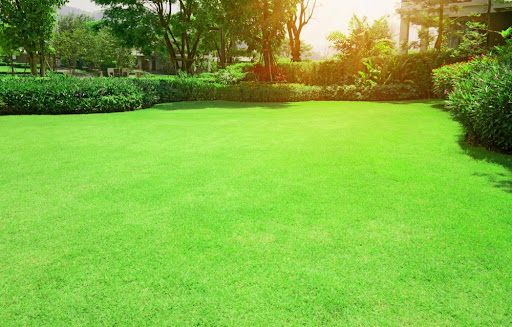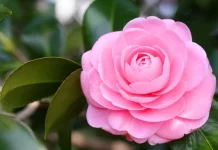Table of Contents
Are You Part of the Anti-lawn Movement?
The anti-lawn movement is receiving a great deal of attention lately as people become increasingly aware of the repercussions of traditional lawns on the environment. In arid parts of the United States, the water used for lawns totals an astonishing 75%, according to a study by Science. In addition, US households and gardens use up to 60 million pounds of pesticides!
For those looking to make a green statement in their backyards, the anti-lawn movement encourages homeowners to take charge with sustainable designs and landscapes while also drastically reducing their water and pesticide usage — all while creating a beautiful oasis outside their doorsteps. It’s all about finding creative ways to contribute to a more eco-friendly world!
The Facts about Lawns
Americans have a love affair with lawns like none other. Although this green grass addiction takes up a small percentage of land compared to the rest of the country, homeowners across America still maintain their prized front yards and postage-stamp backyards despite rising concerns about water use, pollinator conservation, and emissions.
The anti-lawn movement has gained momentum in recent years, and it’s easy to see why. Lawns are known for causing environmental damage in more ways than one. They often use large amounts of water resources, emit greenhouse gasses, and use chemical fertilizers — not to mention the energy required to maintain them with electric or gas tools.
These elements contribute to a damaged environment that we cannot ignore. The anti-lawn movement seeks to remedy this situation by introducing alternatives that go hand in hand with nature while still providing people with a beautiful landscape to admire and enjoy.
While reducing the consumption of resources like water may be difficult, the benefits outweigh any inconvenience. Healthier grass, less air pollution, and more wildlife! It’s urgent that we take part in the anti-lawn movement so that everyone can access a sustainable green future.
The Anti-lawn Movement since 2008
The anti-lawn movement is living proof that it doesn’t take long for trends to catch on in today’s era of awareness and digital connectivity. Since as early as 1962, there have been rumblings of anti-lawn sentiment gaining traction, and more recently, we’ve seen it become part of the larger dialogue around sustainability.
This rise in popularity makes sense when you consider aspects such as the impact of single-species lawns on biodiversity and our growing understanding of how to better create habitats for insects and other animals. A great example is the boost in sales of native milkweed, which has had a significant impact on ensuring pollinators have the resources they need to thrive. It’s an exciting opportunity for all of us to contribute positively towards a sustainable future.
The pandemic brought an uptick in the activity of the anti-lawn movement, with people looking for a way to occupy themselves while being forced to stay home. Gardening became an appealing alternative as various states and cities imposed water-use restrictions, inspiring people to take up new hobbies or expand on existing ones.
But although this movement is gaining traction, it’s not leading to drastic changes right away. Instead, its popularity lies in teaching subtle ways of making a difference, such as how to replace traditional lawns with low-maintenance edibles and natives that won’t require excessive watering and fertilizer. This emphasizes the idea that small efforts have big impacts and add up over time — something we could all benefit from.
Traditional lawns, while often seen as a symbol of beauty in yards across the nation, can have large negative consequences for pollinators. A common example is systemic pesticides being absorbed by tree roots near a traditional lawn and ultimately making their way into the pollen and nectar, which can be highly detrimental to bees. Not only do these chemicals put bees at risk of death, but they can also contribute to major environmental and health damage.
Ultimately, when looking for ways to create more bee-friendly spaces, it’s important to recognize the potential issues posed by traditional lawns and how activities such as the use of pesticides may come into play.
No Mow May
In 2019, a whole new movement started in the UK. No Mow May is now rapidly spreading across the US. It’s easy enough to get started with too. All you have to do is not mow your lawn in May! This helps support the pollinators on the hunt for pollen during the spring. The reason why this approach has been so popular is simply that you don’t need to do anything!
While tearing up an entire lawn and replacing it with native plants can be off-putting (or sure to raise the ire of your local HOA), simply sitting back and not mowing the lawn is incredibly easy. And it’s great for procrastinators.
For those looking for other easier ways to get involved in the anti-lawn movement, there are quite a few options. Reducing the overall size of your lawn is always a good start, but you can think about watering it less often too. Of course, you should absolutely stop using any form of chemical pesticide or fertilizer. It’s also a good idea to get rid of excessive lighting in your garden, as this can affect pollinators such as fireflies.
States Getting Involved
States such as California and Nevada have been actioning plans to conserve water and other resources to combat the extreme effects of climate change. California, in particular, banned the watering of non-functional turf (think lawns for aesthetics only) in commercial and industrial areas and set a goal to replace a significant amount of ornamental turf by 2030.
Nevada will prohibit around 40% of its non-functional turf in Las Vegas from 2027. However, sustainable landscaping has been encouraged for some time already. Back in 1999, Las Vegas ran a program encouraging homeowners to take up greener practices, proving that even decades ago, states were conscious about preserving our planet’s resources.
Replace Your Lawn in 2023!
Is it time to ditch the traditional lawn and embrace a wild and sustainable yard? While not everyone is ready to do that, the anti-lawn movement looks like it’s here to stay. And if you start making even small steps,you’ll be helping the environment. The anti-lawn movement is a fun and eco-friendly way to transform your yard into a sustainable and diverse landscape.
Garden for Wildlife is a leading organization that supports and promotes the anti-lawn movement. They encourage homeowners to plant native species, create wildlife habitats, and reduce their carbon footprint by reducing lawn care resources like water and pesticides. By doing so, homeowners can create beautiful and diverse landscapes that attract and support local wildlife.
Join the movement, support organizations like the NWF and Garden for Wildlife, and make a positive impact on the environment!
















